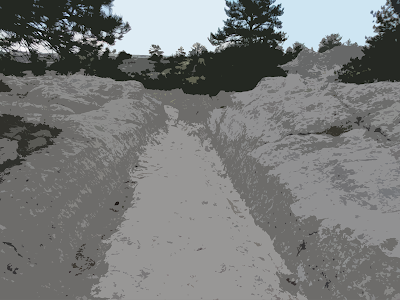Like many Americans, I watched a bit of both the Republican and the Democrat conventions in the past two weeks. Makes me think about some of Wyoming's most famous politicians.
I am not a fan of modern day politicians, but maybe that’s more an age thing. After all, Harry S Truman was president when I was born. It seems to me that compromise is dead when it comes to politics, and it is something that is sorely needed.
Enough editorializing, here is my list, of all time best politicians from Wyoming – listed in alphabetical order so as not to make anyone mad, now that is a compromise.
-Top Ten Wyoming’s Greatest Politicians-
John A. Campbell - First governor of The Territory of Wyoming 1869-1875.
Robert D. Carey - Governor of Wyoming and the first to be both a governor and later a U.S Senator from the state.
Dick Cheney - Love him or hate him, the man had quite a political career. Working for both presidents Nixon and then Ford, where he became Chief Of Staff. After his white house years, he was elected six-time as Wyoming's lone Representative to Congress and later was Secretary of Defense for the first President Bush and Vice President for the second.
Clifford Hansen - Governor in the early 60s and then two-term U.S. Senator.
Lester C. Hunt - Governor 1943-1949 and U. S. Senator 1949-1954.
John B. Kendrick - Governor 1915-1917 and Senator 1917-1933 Quite an accomplishment for a Texas cowboy who came north as a 21-year-old pushing cattle and stayed to become a Wyoming legend.
Cynthia Lummis - She came from a well-known Cheyenne ranch family, but made her mark serving as both a Representative and Senator in the Wyoming State House. Later she served two terms as Wyoming Treasure and them multiple terms in the United States House of Representatives.
John Osborn - Served in Wyoming’s Territorial Assembly, elected as the third Governor of the state, later he served as Wyoming's representative in the U.S. House. Oh, and if you are wondering, he was a physician and had a pair of fine boots made from Wyoming bad man Big Nose George.
Nellie Tayloe Ross - First woman, elected governor in the United States, later ran the U.S Mint in Denver.
Alan K. Simpson - Possibly the most influential politician Wyoming has produced, he served in the Wyoming legislature and then 18 years in the United States Senate.
Francis E. Warren - first elected Governor of Wyoming and then a United States Senator for 37 years.
There you have it, my list, a pretty good group of leaders. In the unlikely event anyone is counting, I know that my top ten list is actually 11, but who has ever heard of a top 11 list?
Feel free to comment on others that should be included, after all, they might find their way into one of my books someday. Actually, they already are, except the book is unfinished, tentatively titled, It’s All About Time, it is my take on the history of our great state. Someday it will be published, hoping for next summer, but then I am the eternal optimist.
 |
Little Know Fact
I once ran for Wyoming Superintendent of Public Instruction |




